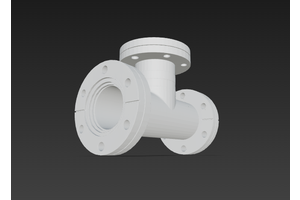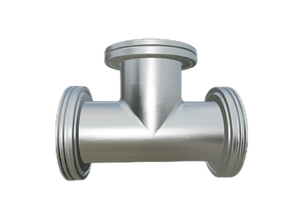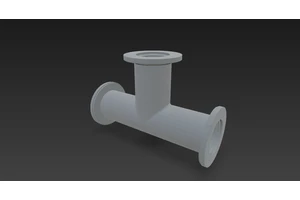-
International Standard Classification of Vacuum Levels
Vacuum levels are classified internationally based on the pressure range within a vacuum system. These categories help researchers, engineers, and manufacturers describe and compare different vacuum conditions in a consistent way. The most widely accepted classification divides vacuum into the following levels:Low Vacuum (Rough Vacuum)Pressure range:100,000 Pa to 100 PaTypical applications: vacuum packaging, basic laboratory work, simple industrial processes.Medium VacuumPressure range:100 Pa to 0.1 PaTypical applications: coating processes, some analytical instruments, and vacuum furnaces.High VacuumPressure range:0.1 Pa to 10⁻⁵ PaTypical applications: electron microscopy, mass spectrometry, and thin-film deposition.Ultra-High Vacuum (UHV)Pressure range:below 10⁻⁵ Pa to 10⁻¹⁰ PaTypical applications: surface science experiments, particle accelerators, and semiconductor manufacturing.Extreme High Vacuum (XHV)Pressure range:below 10⁻¹⁰ PaTypical applications: advanced physics research, s
View -
Understanding the Relationship Between Vacuum, Positive Pressure, and Negative Pressure — Plus Vacuum Unit Conversions
In industrial applications such as scientific research, biotechnology, automation, environmental engineering, and water treatment, understandingvacuum, positive pressure, and negative pressureis essential. These concepts directly impact equipment selection, system design, and process control.Below, we explain these three concepts, their interrelationship, and how to convert between different vacuum measurement units.1. Basic ConceptsAtmospheric Pressure (Normal Pressure)Atmospheric pressure refers to the air pressure exerted by the Earth’s atmosphere.Standard atmospheric pressureis defined as 101,325 Pa (Pascals) or approximately 101 kPa.For simplicity, in engineering practice, we often approximate it as100 kPa, although actual atmospheric pressure varies with altitude, temperature, and weather conditions.Negative Pressure (Vacuum)Negative pressure is any pressurelower than atmospheric pressure. This is essentially what we call avacuum.Example: When you drink through a straw, the insid
View -
Advantages of Microwave Vacuum Drying Equipment
Microwave vacuum drying equipment combines the benefits of microwave heating and vacuum technology, offering significant improvements over conventional drying methods. Its unique heating mechanism and operational efficiency make it an ideal solution for industries requiring fast, uniform, and high-quality drying.1. High EfficiencyTraditional vacuum dryers typically use steam for heating, which transfers heat from the outside to the inside of the material. This process is slow, energy-intensive, and often relies heavily on coal or other fuels.In contrast, microwave vacuum dryers use electromagnetic waves to directly heat the material from the inside out, eliminating the need for a heat transfer medium. The temperature rises rapidly — for example, 1 kW of microwave energy can heat water from room temperature to 100°C in just 3–5 minutes. This significantly shortens the drying cycle, reduces energy consumption, and increases productivity by more than four times compared to conventional me
View -
What are some examples of ultimate vacuum in practical applications
The concept of ultimate vacuum is critical in various fields where extremely low-pressure environments are necessary. Here are several examples showcasing its practical applications:Scientific Research:Particle Physics Research: Facilities like the Large Hadron Collider (LHC) rely on ultra-high vacuum (UHV) conditions, achieving ultimate vacuums down to 10^-9 to 10^-10 Pascals. This ensures that particle beams can travel long distances with minimal collision against gas molecules.Material Science and Surface Analysis: Techniques such as Scanning Tunneling Microscopy (STM) and Atomic Force Microscopy (AFM) require an exceptionally clean environment free from air-borne contaminants, necessitating high or ultra-high vacuum conditions.Semiconductor Manufacturing:In the fabrication of semiconductor chips, processes including Chemical Vapor Deposition (CVD), Physical Vapor Deposition (PVD), and etching are conducted under high vacuum or UHV to minimize contamination and ensure precision. The
View -
Applications of Vacuum in Transport, Attraction, Lifting, and Vacuum Molding Equipment
Vacuum technology plays a pivotal role in various equipment designed for transport, attraction, lifting, and vacuum molding by leveraging the pressure differential between a vacuum and atmospheric pressure to perform work. This mechanical energy, characterized by uniform pressure distribution, can be applied seamlessly across any shape or plane. The versatility of these vacuum devices finds extensive application in industries ranging from food processing (such as fish, grain, flour, coal powder) to construction materials (cement, precast slabs), environmental cleanup (suctioning radioactive dust after atomic explosions), medical procedures (like fetal aspiration during abortions), and more. These applications are marked by their simplicity, ease of operation and maintenance, vibration-free performance, high efficiency, safety in handling delicate items, and environmentally friendly nature.Vacuum Transport, Attraction, and Lifting EquipmentIn sectors like agriculture, manufacturing, and
View -
What is a vacuum, and how is vacuum level defined
Avacuumis a space where the pressure is lower than the standard atmospheric pressure (101.325 kPa or 101 kPa), meaning it contains fewer gas molecules than the surrounding atmosphere.Thevacuum level(or degree of vacuum) measures how much lower the pressure is compared to atmospheric pressure. It is defined as:Vacuum Level = Atmospheric Pressure – Absolute PressureThis value is always positive and indicates how close the space is to a perfect vacuum. For example, a vacuum of “-75 kPa” or “90% vacuum” means the pressure inside is 75 kPa below atmospheric pressure or 10% of atmospheric pressure remaining, respectively.
View -
Vacuum Generation Methods in Semiconductor Manufacturing Equipment
Introduction to VacuumVacuum refers to a space devoid of any matter or with extremely thin gas, typically defined as a state where the pressure is below one standard atmosphere (101325 Pa). It plays a pivotal role in semiconductor manufacturing by providing environments essential for various processes.Applications of Vacuum in Semiconductor EquipmentWafer/Reticle Handling: Utilizes vacuum to securely hold wafers and reticles during processing.Creating Reaction Conditions: Vacuum conditions are crucial for reducing impurities and ensuring high purity and structural integrity of materials used in semiconductor devices.Specific Applications:Crystal Growth Equipment: For instance, in the production of single-crystal silicon using the Czochralski method, a low-oxygen vacuum environment minimizes impurity incorporation, enhancing crystal quality.Compound Semiconductor Growth: Precise control over stoichiometry during growth under vacuum ensures optimal electrical performance of compound semi
View -
The Application of Vacuum Technology in Food Packaging and Freeze-Drying Industries
Over the past two decades, vacuum-sealed packaging has rapidly advanced as a key method for food preservation. This technique effectively removes oxygen, preventing spoilage and extending shelf life. Additionally, vacuum packaging—whether in shrink-wrap or modified-atmosphere forms—safeguards food from insect damage and inhibits mold growth. Its advantages include simple, user-friendly equipment, low operational costs, and affordable plastic materials that are both visually appealing and widely accessible. Common vacuum-packaged products range from pickled vegetables (e.g., mustard tubers, kohlrabi, kelp) to meats (sausages, roast chicken, duck), soy products, milk powder, and malted beverages.The fresh produce supply chain often suffers significant losses due to prolonged intermediary stages between harvest and retail, driving up prices. Vacuum packaging mitigates this by reducing spoilage and refrigeration costs, thus stabilizing prices and easing supply-demand imbalances. As a resul
View -
Common calculation formulas for vacuum physics and vacuum
1. Boyle's Law: When the temperature remains constant, the relationship between gas pressure P and volume V is P · V=constant, that is, P1/P2=V2/V1.2. Gay Lussac's law: When the pressure P is constant, the volume V of the gas is proportional to the absolute temperature T, such as V1/V2=T1/T2=constant. For every 1 ℃ increase (or decrease), the volume changes by 1/273 times.3. Charlie's Law: In the case of a constant volume V, the gas pressure P is proportional to T, that is, P1/P2=T1/T2. A temperature change of 1 ℃ results in a corresponding increase or decrease of 1/273 in pressure.4. Average free path: λ=5 × 10-3/P (cm) describes the average free path of gas molecules.5. Pumping speed calculation: S=dv/dt (liters/second) or S=Q/P, where Q is flow rate, P is pressure, V is volume, and t is time.6. Conductivity formula: C=Q/(P2-P1) (liters/second) represents the ability of fluid to pass through a pipeline.7. Vacuum pumping time: t=8V/S, empirical formula, used to estimate the pumping ti
View -
What is the degree of vacuum considered as vacuum
In engineering and technical contexts, a space is considered under vacuum as soon as its absolute pressure is below standard atmospheric pressure (101 325 Pa or 1 atm).
View
Vacuum




